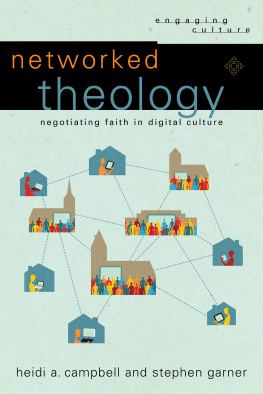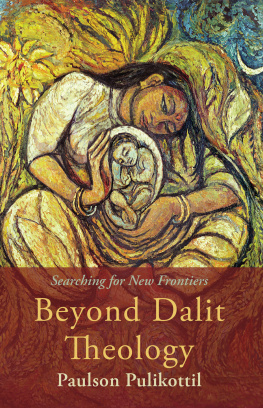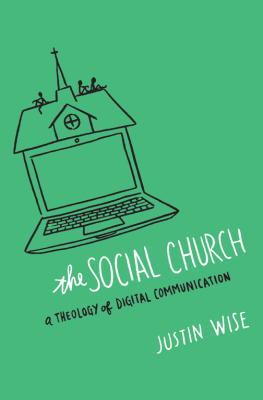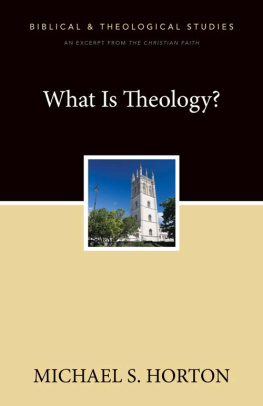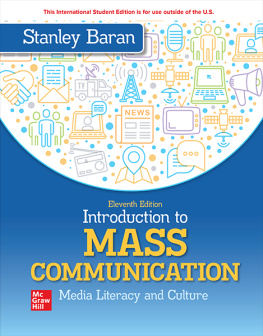1. Theology of Technology 101: Understanding the Relationship between Theology and Technology
2. New Media Theory 101: Understanding New Media and the Network Society
3. Networked Religion: Considering How Faith Is Lived in a Network Society
4. Merging the Network with Theology: Who Is My Neighbor in Digital Culture?
5. Developing a Faith-Based Community Response to New Media
6. Engaging Appropriately with Technology and Media
acknowledgments
Heidi A. Campbell wishes to thank the Vaughan Park Scholars Scheme in New Zealand and John Fairbrother, who provided me with space in the fall of 2009 where I began to envision this book project and where Stephen and I first began our conversations on theology and technology. Since that time my thinking on theology and new media has been greatly informed and enriched by insightful conversation with a number of theologians and religion and media scholars around the worldnamely, Lynne Baab, Tim Bulkley, Michael Delashmutt, John Dyer, Mary Hess, Peter Horsfield, Tim Hutchings, Miranda Klaver, Paul Soukup, Matthew Tan, and Pete Ward. I am also grateful to the University of Durham COFUND Scheme at the Institute for Advanced Study, especially Simon Litchfield, and to CODEC at St Johns College, especially David Wilkinson, who hosted me in fall 2012 as a visiting senior scholar. It was then that initial drafts of many of my chapters were mapped out in the inspiring environments of Bex Lewiss lounge, East Coast and Cross Country trains as I traversed the UK, and Flat White in Durham, where I pondered over many a cuppa. Very special thanks go out to Andy Byers, Bex Lewis, Pete Phillips, and Byrony Taylor from CODEC, who read and provided useful comments on early drafts of my chapters. I am further blessed by my international friendship and family networkincluding John Campbell, Nicola Hoggard-Creegan, Heather and Robb Elmatti, Gigi and John Greene, John and Sally Stuart, Helen and David Senior, and Judy Websterwho have supported me through this writing project and provided me with food, feedback, and encouragement along the way. Thanks also to my coauthor, Stephen Garner, for being a committed discussion partner and collaborator; to Kathy DiSanto, my faithful friend and copyeditor; and to Robert Hosack at Baker Publishing for his patience and oversight in this project.
Stephen Garner is thankful for the many conversations about faith and technology over the years leading up to this book project. Some of these conversations came out of the computer science communities I studied and worked in, pricking my interest in situating technology within the context of Christian faith. I am particularly indebted to Tony Smith at the University of Waikato, Hamilton, for early conversations in this area. I am also grateful for the support and encouragement I received from the theology faculty at the University of Auckland in terms of early research funding and the companionship of Elaine Wainwright, Nick Thompson, and Caroline Blyth. More recently, I am indebted to my current employer, Laidlaw College, and to Martin Sutherland and Tim Meadowcroft for their ongoing support as friends and colleagues. I would also like to thank the students I have taught in theology, technology, and media courses for their questions that got right to the heart of networked theology. My work has also been influenced and enriched by many conversations with Australasian theologians and media scholars, including Tim Bulkeley, Steve Taylor, Craig Mitchell, Ann Hardy, Peter Horsfield, Paul Emerson Teusner, and Lynne Baab. Others along the way, such as Jason Clark, Bex Lewis, Mary Hess, and Andrew Bradstock, have added their voices to the conversations. To Heidi Campbell, my coauthor, my deep thanks for our many conversations and collaborations on media and theology over the years and for your hard work in steering this project. I am blessed by your scholarship and friendship. To my wife, Kim, and children, Mark, Chris, Laura, and Philip, thank you for all your love and for the time given to this project. Finally, thanks to Kathy DiSanto for her copyediting and to Robert Hosack at Baker Publishing for his ongoing support for this project.
bibliography
Ahuja M. K., and K. M. Carley. Network Structure in Virtual Organizations. Journal of Computer-Mediated Communication 3, no. 4 (1998). http://jcmc.indiana.edu/vol3/issue4/ahuja.html.
Ammerman, N. T. Congregation and Community . New Brunswick, NJ: Rutgers University Press, 1997.
Andrews, Dave. Christi-Anarchy: Discovering a Radical Spirituality of Compassion . Oxford: Lion, 1999.
Armfield, G. G., and R. L. Holbert. The Relationship between Religiosity and Internet Use. Journal of Media and Religion 3, no. 2 (2003): 12944.
Arthur, Chris, and World Association for Christian Communication. Religion and the Media: An Introductory Reader . Cardiff: University of Wales Press, 1993.
Baab, L. M. Friending: Real Relationships in a Virtual World . Downers Grove, IL: InterVarsity, 2011.
. Reaching Out in a Networked World: Expressing Your Congregations Heart and Soul . Herndon, VA: Alban Institute, 2008.
Bacon, F. The New Organon. In The Works of Francis Bacon , vol. 4, edited by F. Bacon, J. Spedding, R. L. Ellis, and D. D. Heath, 39248. London: Longman, 1857.
Baer, D. A., and R. P. Gordon. Hesed. In The New International Dictionary of Old Testament Theology and Exegesis , edited by Willem VanGemeren, 21118. Grand Rapids: Zondervan, 1997.

